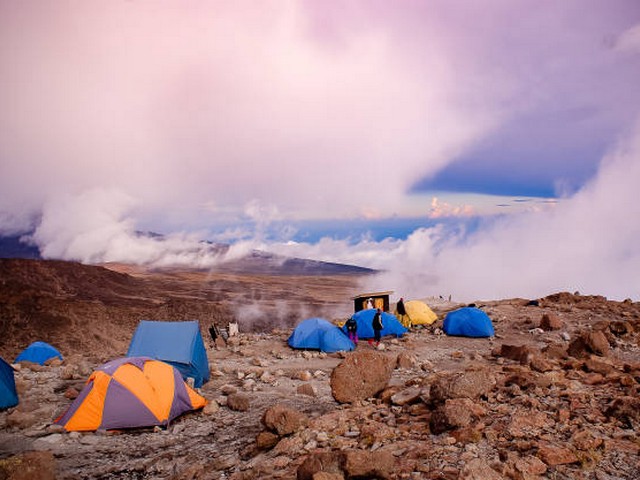Kilimanjaro Trekking Hydration Guide: Essential Tips for Conquering the Roof of Africa
When you set your sights on the majestic summit of Mount Kilimanjaro, you’re not just embarking on a physical journey, but a quest that challenges your endurance and spirit. Among the critical elements to conquer this towering peak, proper hydration stands as a cornerstone of success. At the Kilimanjaro Centre for Trekking and Ecotourism (KCTE), we take pride in guiding adventurers safely and joyfully to the summit. This comprehensive guide will walk you through expert tips and vital information to keep you hydrated as you ascend through the breathtaking landscapes of Kilimanjaro.
Why Hydration is Key on Mount Kilimanjaro
Ascending through the five climatic zones of Kilimanjaro, from tropical rainforest to arctic conditions at the summit, poses unique challenges, especially when it comes to maintaining adequate hydration. The altitude, combined with the exertion of trekking, increases your water loss, making dehydration a significant risk that can lead to altitude sickness and diminished physical performance.
Proper hydration helps maintain your circulation, aids in acclimatization, and keeps your energy levels up. Thus, understanding and implementing effective hydration strategies is not just advisable; it’s essential.
How Much Water Do You Need on Kilimanjaro?
Understanding Your Body’s Demand
At higher altitudes, your body loses water through respiration and increased urination. It’s generally recommended to drink between 3 to 4 liters of water per day during your Kilimanjaro trek. This amount helps to facilitate acclimatization and reduces the symptoms of altitude sickness.
Planning Your Intake
It’s best to start hydrating a few days before your climb. Once on the mountain, you should aim to drink at least one liter of water before you even start your day’s trek. Continue to sip small amounts of water regularly throughout your hike rather than consuming large quantities infrequently.
Choosing Your Hydration Sources
Water Treatment on Kilimanjaro
While Kilimanjaro’s streams offer fresh mountain water, it’s crucial to treat this water before drinking. Boiling, chemical treatment, or a reliable water filter should be employed to avoid waterborne illnesses.
Hydration Supplements
In addition to water, consider electrolyte supplements or sports drinks that replace salts lost through perspiration. These can enhance hydration and prevent cramping. Pack hydration salts or tablets before you travel, as these might not be readily available locally.
Tips for Managing Water Intake
Keep Water Accessible
Carry your water in a way that it is easy to access without needing to stop and unpack. Hydration packs or water bottles in side pockets of your backpack are ideal. This makes it more likely that you’ll keep drinking throughout the day.
Monitor Your Hydration Levels
Pay attention to the color of your urine—it should be light and clear. Dark urine is a common indicator of dehydration. Also, be aware of feelings of dizziness, headache, or dry mouth, which may signify that you need to increase your fluid intake.
Avoiding Overhydration
Drinking too much water, known as water intoxication, can dilute body salts leading to a dangerous condition called hyponatremia. Balancing water intake with electrolyte replenishment is key. Listen to your body, and maintain a steady, reasonable pace of hydration.
FAQs: Hydrating on Kilimanjaro
Can I drink the water directly from mountain streams?
It’s not safe to drink directly from streams on Kilimanjaro without treating the water first. Always use a reliable filtration method.
How can I carry 3-4 liters of water each day?
Use a combination of a hydration bladder and water bottles. Distribute the weight evenly in your pack for balance and ease of access.
What are the signs that I’m not drinking enough water?
Symptoms of dehydration include headaches, fatigue, dry mouth, and dark-colored urine. If you experience these, increase your fluid intake immediately.
Are there any risks associated with using electrolyte supplements?
Electrolyte supplements are generally safe when used according to instructions. However, it’s important to ensure they do not contain excessive sugar or caffeine.
Why Choose KCTE for Your Kilimanjaro Adventure?
At the Kilimanjaro Centre for Trekking and Ecotourism (KCTE), we not only ensure that you are well-educated about hydration and safety, but we also provide an unforgettable and transformative trekking experience. Our expert guides lead you safely, our porters carry your equipment, and our chefs prepare nutritious meals to support your journey every step of the way.
Final Thoughts & Call to Action
Conquering Kilimanjaro is an extraordinary achievement that requires preparation, determination, and the right guidance. Staying hydrated is a critical piece of the puzzle, ensuring you enjoy the journey and reach the summit with a smile.
If you’re dreaming of standing atop Africa’s highest peak, breathing in the crisp, cold air above the clouds, let KCTE be your guide. Book your Kilimanjaro climbing adventure with us today, and prepare to be inspired, challenged, and ultimately, transformed. Embrace the journey with every hydrated step forward!
Embark on this life-changing adventure with the expertise and passion of KCTE, where your dreams and adventures meet, creating lifetime memories. See you at the summit!




